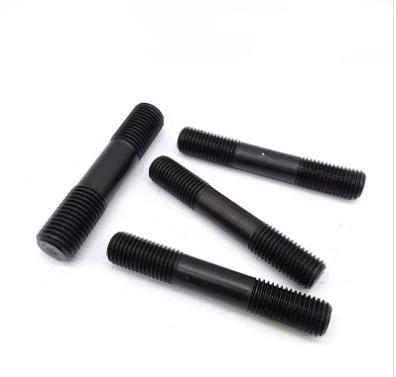

Understanding the Benefits and Applications of Projection Welded Studs in Industrial Settings
Nov . 10, 2024 04:18 Back to list
Understanding the Benefits and Applications of Projection Welded Studs in Industrial Settings
Understanding Projection Weld Studs A Comprehensive Overview
Projection weld studs play an essential role in modern manufacturing, particularly in the automotive and electronics industries. This specialized fastener not only provides mechanical strength but also influences the overall efficiency and durability of the assemblies in which they are used. Understanding projection weld studs, including their design, application, and benefits, is crucial for engineers and manufacturers striving for quality and efficiency in their production processes.
What Are Projection Weld Studs?
Projection weld studs are fasteners designed with a protruding feature, or projection, that is specifically engineered for resistance welding processes. These studs are typically made from conductive materials, such as steel or aluminum, and utilize a relatively simple welding technique to create a strong joint between two components. The projection on the stud serves as a focal point for the welding process, minimizing the amount of heat required and ensuring a precise, controllable weld.
The Welding Process
The projection welding process begins by placing the stud against the workpiece. An electrical current is then passed through the stud, generating localized heat at the projection. This heat melts the material and allows the stud to be embedded into the workpiece. Once sufficient heat is generated, a force is applied to join the two pieces together, forming a solid metallurgical bond upon cooling.
This method is particularly efficient as it allows for the welding of multiple studs in a single operation. It can be performed rapidly, making it ideal for high-volume production lines, such as in automotive assembly or appliance manufacturing.
Applications of Projection Weld Studs
Projection weld studs have diverse applications across various industries. In the automotive sector, they are commonly employed to attach components like brackets, panels, and housings to chassis frames. Furthermore, these studs are used in electrical assemblies where reliable connections are necessary for electrical conductivity and mechanical stability.
In the electronics industry, projection weld studs are used to secure components on printed circuit boards (PCBs) and in battery assemblies. The ability to create strong, reliable connections without damaging sensitive electronic components is critical in maintaining the integrity and performance of these devices.
projection weld studs

Advantages of Using Projection Weld Studs
There are several advantages to utilizing projection weld studs in manufacturing processes
1. Strength and Durability The solid metallurgical bond formed through projection welding ensures high shear strength and resistance to fatigue, which is critical in demanding applications.
2. Cost-Effectiveness The efficiency of the projection welding process reduces labor costs and production time, translating into lower overall manufacturing costs. Additionally, there is minimal waste as the process typically does not require additional fasteners or adhesives.
3. Quick Installation The ease of installation saves time in assembly processes, making it an attractive option for manufacturers looking to enhance productivity.
4. Versatility Projection weld studs can be designed in various sizes and shapes to accommodate specific design requirements, making them suitable for a wide range of applications.
5. Effective Electrical Connections When used in electrical assemblies, projection weld studs provide reliable connections that minimize resistance and heat generation, which can improve the efficiency of electrical systems.
Conclusion
Projection weld studs are a critical component in many manufacturing processes, offering superior strength, cost-effectiveness, and efficiency. Their application spans various industries, making them a versatile choice for assembly and fabrication. For engineers and manufacturers, understanding the principles of projection welding and the advantages of using studs can significantly impact the quality and success of their products. As technology continues to evolve, projection weld studs will undoubtedly remain a vital element in the quest for innovation in manufacturing.
Latest news
-
High-Strength Hot Dip Galvanized Bolts - Hebei Longze | Corrosion Resistance, Customization
NewsJul.30,2025
-
Hot Dip Galvanized Bolts-Hebei Longze|Corrosion Resistance&High Strength
NewsJul.30,2025
-
High-Strength Hot-Dip Galvanized Bolts-Hebei Longze|Corrosion Resistance&High Strength
NewsJul.30,2025
-
Hot Dip Galvanized Bolts-Hebei Longze|Corrosion Resistance&High Strength
NewsJul.30,2025
-
Hot Dip Galvanized Bolts - Hebei Longze | Corrosion Resistance, High Strength
NewsJul.30,2025
-
High-Strength Hot Dip Galvanized Bolts-Hebei Longze|Corrosion Resistance, Grade 8.8
NewsJul.30,2025

